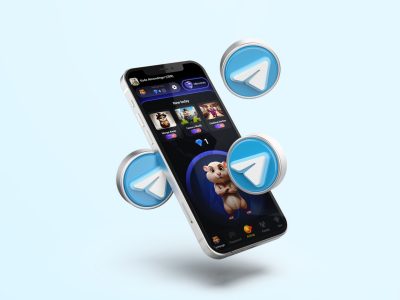
Boost Your Native Gaming Ads. Have you ever wondered why stop signs are red? Or why some brand logos resemble smiling faces? While these questions may seem unrelated, they share a common answer: psychological influence.
Whether we realize it or not, our subconscious mind plays a crucial role in decision-making. As an affiliate marketer, you can (and should!) leverage psychological principles to your advantage—especially when combining native ads with gaming offers.
However, identifying and understanding these psychological patterns takes time, particularly in such a diverse industry.
To simplify the process, we’ll explore the power of psychology, explain why native ads work exceptionally well for gaming offers, and provide actionable strategies to optimize your campaigns.
Why Are Native Ads the Ideal Choice for Gaming Offers?
Native advertising is gaining popularity across various industries, but no sector sees better results than gaming.
Gamers enjoy immersing themselves in fantasy worlds, and native ads enable affiliates to engage with these users without disrupting their experience. Because of this, users tend to be more receptive to the content and, ultimately, the offers they encounter.
Beyond this, understanding the psychological factors that influence their mindset can significantly enhance the performance of your gaming ads.
11 Psychology-Driven Strategies for Native Gaming Ads
There are countless ways to approach a gaming ad campaign. Through research, we’ve identified the most effective methods—many of which are deeply rooted in psychology.
Here are 11 powerful, psychology-based strategies to enhance your native gaming ads.
1. The “Forbidden” Appeal
This technique relies on reverse psychology. By suggesting that users shouldn’t play a game for a particular reason, their curiosity and desire to rebel take over.
Age restrictions work well, but you can also experiment with other limitations. Be sure to incorporate a compelling game character or an element that aligns with the restriction you choose.
2. Community Influence
Gamers often seek a sense of belonging. Using dynamic content, you can create the impression that people in their area are already playing the game. However, be mindful of GEO-specific details to ensure your claim appears credible.
3. The Power of Mystery
Emotions are a key driver of decision-making. Of all human emotions, curiosity is among the most compelling. It pushes people to seek answers, even when they aren’t entirely interested in the subject.
This innate curiosity can be leveraged in your ads—leaving questions unanswered compels users to engage just to satisfy their need for closure.
4. Attractive Characters Capture Attention
As visual creatures, humans are naturally drawn to aesthetically pleasing imagery. We also form connections with characters based on their appearance. By using the most visually appealing and realistic game characters, you can build an emotional connection with your audience.
5. The “Free” Incentive
Though some may be hesitant to use this approach, the promise of “free” content is a powerful motivator. The key is to create the perception of value—make users feel they’re gaining something significant at no cost, then smoothly direct them to your offer.
6. Reward-Based Motivation
Positive reinforcement enhances user engagement by offering a gratifying experience after a desired action is completed. This strategy works best when users are promised a reward and actually receive it, fostering trust and loyalty.
7. The Logic-Based Justification
Many users want to download a game but need rational justification for their decision. Providing technical details—such as performance benefits, unique features, or innovative mechanics—can help users feel they are making a logical choice rather than an impulsive one.
8. Encourage PC Play for Mobile Users
Mobile devices are a vital part of users’ daily lives, and many people hesitate to drain their phone’s battery on gaming. Use this concern to your advantage by encouraging players to switch to their PC for an uninterrupted experience.
9. Informative Listicles and Guides
Gamers frequently seek useful content, such as walkthroughs, strategies, or guides. Ads that resemble listicles or news-style articles can attract users looking for valuable insights while seamlessly introducing them to your offer.
10. Pop Culture References
Cult movies and TV shows have massive fan bases. By incorporating elements from widely recognized media—such as character similarities or thematic references—you can create ads that resonate with audiences on a nostalgic or emotional level.
11. Emotional Resonance
Despite the billions of internet users, human emotions are relatively limited. At any given moment, thousands of people are experiencing the same emotional state. By crafting creatives that align with strong emotions, you can tap into a broad audience segment effectively.
Unlock the Full Potential of Your Native Gaming Ads
The gaming industry is highly competitive, but by utilizing native ads and applying the psychological strategies above, you can boost your conversion rates significantly.
Want to stay ahead of the latest trends in advertising, top-performing industries, or new opportunities? Join our Telegram Chat and keep up with the best insights!





